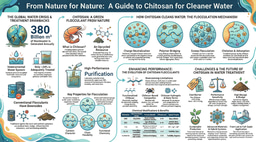Plastic pollution is infiltrating coral ecosystems in the ocean.
Published in Chemistry and Earth & Environment
In the beautiful ocean, coral reefs shine like precious gems, nurturing rich biodiversity. However, with the intensification of climate change and ocean acidification, corals are facing unprecedented stress. Adding to this burden, microplastic pollution has quietly infiltrated the marine environment, posing new threats to coral growth and health. This once-thriving ecosystem now faces a crisis that cannot be overlooked. Microplastics, originating from human activities, are carried by ocean currents throughout the global marine environment. These pollutants not only impact ecosystems and human health but also present significant chemical and physical challenges for the future of the oceans. However, given the diversity of coral species, how microplastics harm corals remains unclear.
Our research team recently conducted an important study that reveals a novel threat posed by polyethylene microplastics to Briareum violacea coral. The results showed that exposure to seawater containing polyethylene microplastics induced significant changes in the skeletal structure of these corals. Specifically, the presence of microplastics altered the growth of calcite and aragonite crystals in the coral skeletons, gradually leading to the formation of amorphous calcium carbonate.
Using X-ray diffraction analysis, we examined the coral skeletons and found that healthy B. violacea corals contain two main calcium carbonate crystal forms: calcite and aragonite. As the concentration of polyethylene microplastics increased, the signal of calcite weakened, indicating damage to the coral skeletons. At higher concentrations of polyethylene microplastics, the aragonite crystals nearly disappeared, replaced by unstable amorphous calcium carbonate. These microplastics not only disrupted the structural integrity of the coral skeletons, making them more prone to dissolution, but also altered the seawater's calcium ion concentration. Our seawater analysis revealed a significant increase in calcium ion concentration in treatments involving microplastics, suggesting that the coral skeletons became more susceptible to dissolution and damage.
This study sounds the alarm: the growing pollution from microplastics cannot be ignored, as corals are becoming victims of this environmental crisis.
DOI :10.1007/s10311-024-01790-8
Follow the Topic
-
Environmental Chemistry Letters

This journal covers the interfaces of geology, chemistry, physics and biology. Articles published here are of high importance to the study of natural and engineered environments.


Please sign in or register for FREE
If you are a registered user on Research Communities by Springer Nature, please sign in